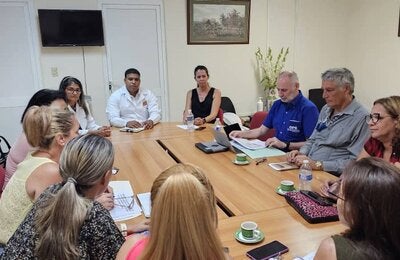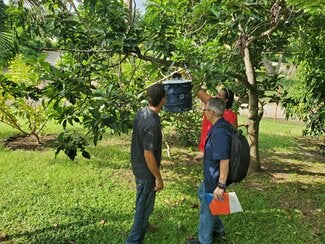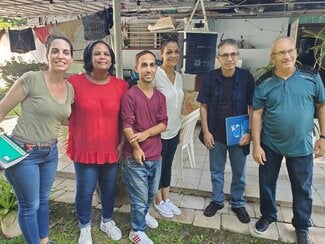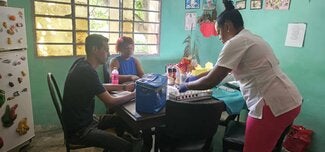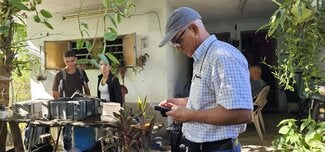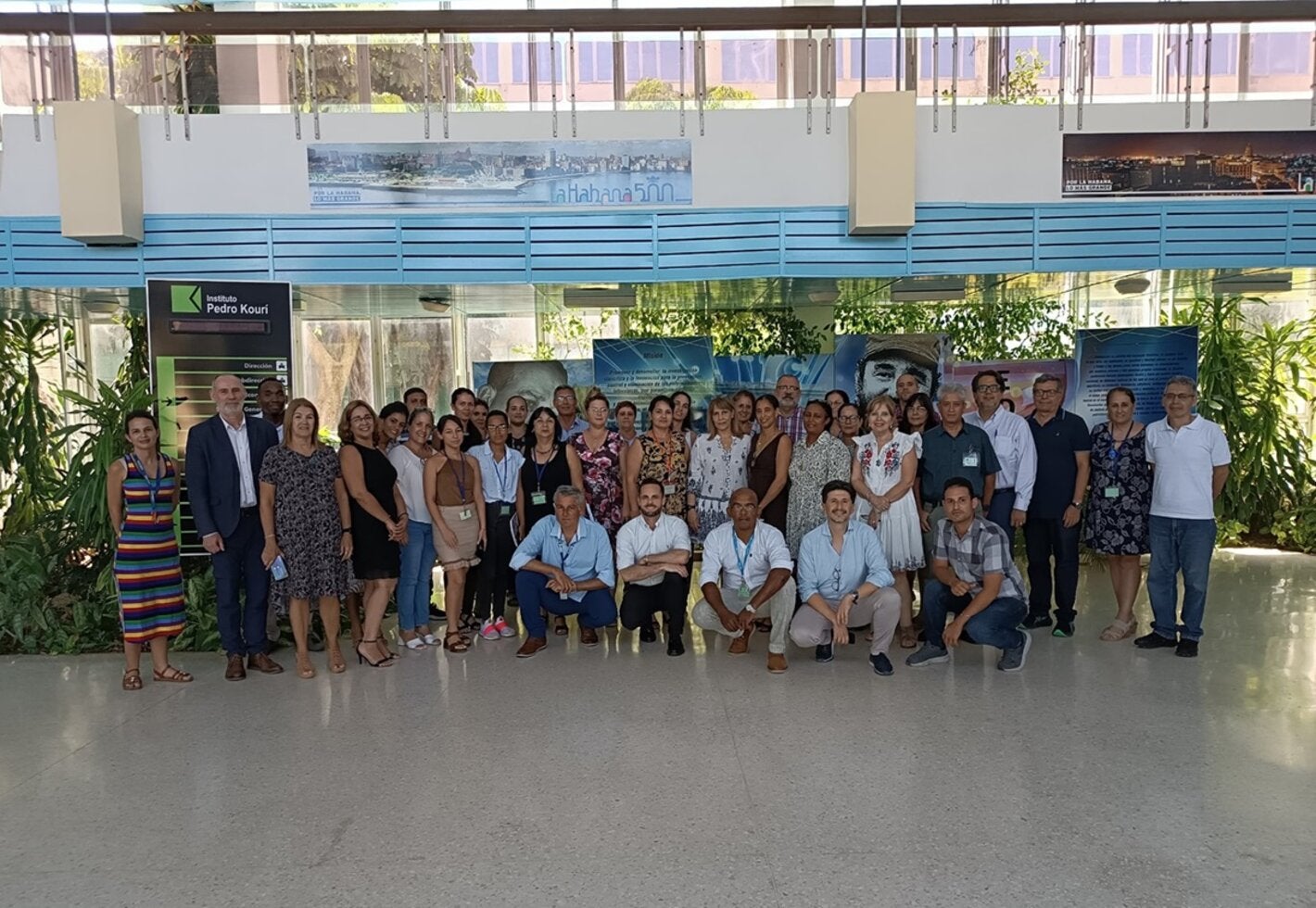
Havana, Nov. 26, 2024 (PAHO) – In May 2024, the Cuban Ministry of Public Health (MINSAP) reported the first outbreak of Oropouche virus (OROV) in the country, with 89 confirmed cases in the provinces of Cienfuegos and Santiago de Cuba. Since then, the Pan American Health Organization (PAHO)/World Health Organization (WHO) has closely monitored the situation and has been in ongoing communication with Cuban health authorities to support the response efforts.
As part of its technical cooperation, PAHO has donated additional reagents and materials for the molecular detection of OROV. In addition, PAHO's Department of Health Emergencies facilitated training for several Cuban specialists from the "Pedro Kourí" Institute of Tropical Medicine (IPK) and the Immunoassay Center (CIE). These specialists participated in multiple training sessions in Brazil, where they focused on sequencing the virus's complete genome, as well as on the serological and molecular detection of OROV infection. They also learned how to produce essential reagents for detecting IgM antibodies against the virus.
Most recently, from September 16 to 20, a technical support mission was organized by MINSAP in collaboration with PAHO experts from the Departments of Health Emergencies and Communicable Diseases, the Latin American Center for Perinatology, Women's and Reproductive Health (CLAP/SMR), and the PAHO/WHO Representation in Cuba.
The mission had three primary objectives: first, to assess the current Oropouche virus (OROV) situation in Cuba and analyze the factors contributing to the ongoing outbreak; second, to identify gaps, challenges, and opportunities for enhancing response and control capacities; and third, to propose research initiatives aimed at addressing knowledge gaps in areas such as transmission, seroprevalence, the clinical characterization of severe cases, and the role of various vectors.
During the PAHO mission, regional experts in virology, epidemiology, clinical management, entomology, and maternal and child health worked alongside Cuban specialists in a series of activities. These included exchanges and site visits to health facilities, including a polyclinic and a clinic in the La Lisa municipality of Havana. National institutions such as the Pedro Kourí Institute of Tropical Medicine (IPK), the National Center for Medical Genetics (CNGM), and the “Enrique Cabrera” General Teaching Hospital were also involved.
Recommendations and Follow-up
The mission led to several key recommendations, particularly emphasizing the need for continued research to enhance Cuba’s understanding of Oropouche virus (OROV) and contribute to a broader understanding of the disease in the Americas. This is especially important given the recent increase in reported OROV fever cases in certain regions.
Key recommendations included:
- Ongoing clinical characterization of the disease, including monitoring trends in birth defects and adverse perinatal outcomes.
- Conducting studies to determine the proportion of the population exposed to the virus.
- Further characterization of Culicoides midge populations in Cuba, which are potential vectors of the virus.
- Continued surveillance to identify OROV vectors and confirm the primary vector species.
- Regular monitoring of potential breeding sites for vector control, with a focus on entomological surveillance and estimating vector population densities.
These efforts are critical to improving Cuba’s response and to contributing to the regional understanding of OROV transmission and control.
As confirmed recently by Dr. Carilda Peña García, Vice-Minister of Public Health, Cuba has already made significant progress in implementing several of the mission's recommendations. Two epidemiology projects are currently underway. One of these is being conducted in the community of Juan de Dios Fraga, located in the municipality of La Lisa. This study follows an integrated approach that combines aspects of epidemiology, entomology, virology, clinical care, and climate. Workers from the Pedro Kourí Institute of Tropical Medicine (IPK) and the local polyclinic are participating as volunteer surveyors in the project.
Additionally, plans are in place for training on clinical detection and case management, maternal-fetal transmission surveillance, and the identification and reporting of suspected Oropouche virus cases. The training will also focus on virus monitoring in vectors and vector control strategies. Furthermore, two entomology specialists will soon travel to Brazil to participate in a theoretical and practical workshop on the biology, ecology, and surveillance of Culicoides midges—vectors of Oropouche virus in the Americas. The workshop will take place from November 18–22, 2024


